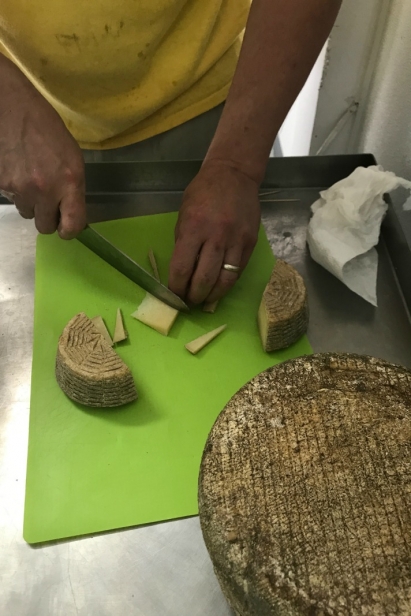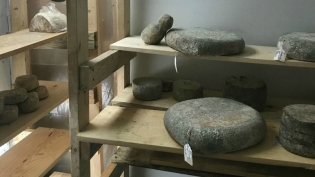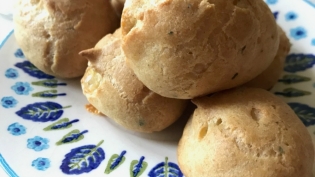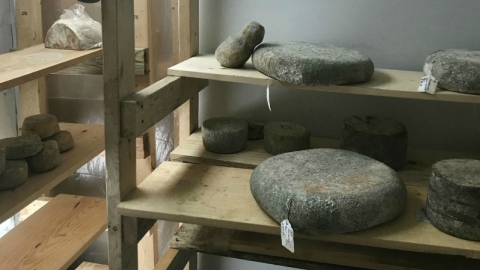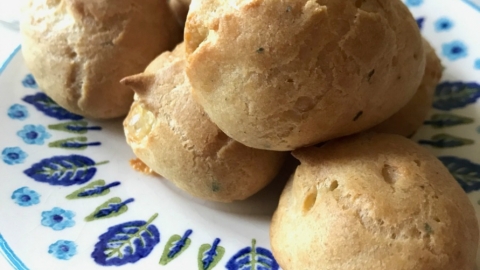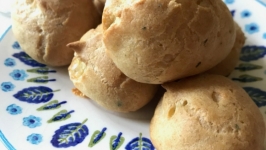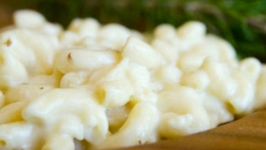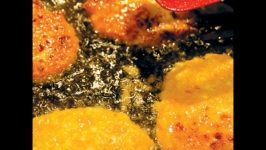How To Make A Cheese Plate
The first time I encountered Blue Ridge Creamery, it was on a cheese plate at The Anchorage that my friend Mamie ordered for dessert. Usually, the restaurant serves a meat and cheese plate for the start of a meal, but Mamie doesn’t often eat sweets or pork or livery mousses, and she has a way of getting wait staff to bring her anything she likes. (She asks nicely, and in her soul, she’s also one of their own.)
The cheese plate was beautiful, with mostarda and breads and pickles and jams, but I was wildly impressed with the cheeses, which included Blue Ridge Bleu, Jocassee Tomme and Eastatoee. While we have lovely goat cheese in the Upstate, cow milk cheese has been slower to come to market, and aged cheeses are very rare indeed. The interwebs led me to Blue Ridge Creamery, and Christian Hansen.
When we met, I asked him what he liked to do with his cheeses in the kitchen. His look had not a little bit of raised eyebrow. “I don’t cook with cheese a lot,” he said. When it comes to tasting cheeses, he doesn’t pair them with fruits and jams and crackers either. “Just eat it, especially if it’s the first time.”
While I wholeheartedly agree, it’s also true that blue cheese and pears are magnificent together, and roasty nuts, a little drizzle of honey can be a beautiful thing too, and a whole different thing than cheese alone. But the how and when and how much of a cheese plate can be overwhelming, and like most things based on simplicity, easier to mess up that you think.
Here are some cardinal rules and important considerations when putting together a cheese plate.
TEMPERATURE
Don’t serve your cheese right out of the fridge. Cold dulls flavors and changes textures, particularly in soft cheeses. A lush and almost runny Brie can taste like a kitchen sponge. Let your cheese relax on the counter at least an hour before you plan to serve it.
VARIETY
You want to offer a sampling of different types of cheese, but you don’t want to offer the whole cheese shop. In general, pick an aged cheese, a soft one, a firm one and a blue one. Pick cheeses from different countries, made from different milks, something mild and something sharp, or stinky.
PAIRINGS
Think of the accouterment on a cheese plate like roommates, or in-laws. Space is vital to enjoyment, and too many too close can spoil a good thing fast. Choose one in-season fruit for your cheese plate, one sweet honey or jam, one savory mustard or nut, and one briny option, like olives or pickles. Allow these things to share the cheese plate, but don’t pile them on top of each other. Think of Christian, and his serious look.
VEHICLES
Bread or crackers are important parts of the cheese plate experience, not only as neat ways to get the cheese from the plate to your mouth, but also eaten on their own, in between types of cheeses, to clear your tastebuds for the next adventure. There are so many great bakeries in the Upstate. Get a nice loaf, some water crackers (or gluten-free business). English digestive biscuits, like thick graham crackers, also make a great match with cheese.
WHAT WOULD JULIA DO?
In one episode of her legendary TV show The French Chef, Julia Child recommends hosting a cheese and wine party after dinner. When she and Paul were living in Norway, such after-dinner parties were called aftons, and her favorite part is that you don’t HAVE to cook anything at all. But then she’s Julia Child, and so rolls out several recipes for lovely cheesy tidbits, because, she says, “When you cook, it makes it more of a party.”
Julia also suggests you find a good book on wine for your party, so that when you swirl the wine and smell the wine, you can make lovely remarks about the wine that you learn from your good books. I adore Julia Child. But too, wine drinking and writing has come a long way since the days of The French Chef. These books are fun and informative, and some of my favorites out right now.
Cork Dork, by Bianca Bosker
Called the Kitchen Confidential of wine, this memoir from professional journalist and amateur drinker Bianca Bosker charts her journey through sommelier training. So many smart questions asked and answered here about what makes wine so compelling.
The 24-Hour Wine Expert, by Jancis Robinson
Ms. Robinson proposes if you give her 24 hours, she’ll teach you how to select the right bottle, what wine labels mean, how to understand the properties of color and aroma, and how to match food and wine.
Wine. All the Time, by Marissa A. Ross
This guide (by Bon Appetit wine editor) advocates The Ross Test, wherein you judge a wine by chugging it right out of the bottle. Wine should be fun! There’s great information here, and not an ounce of pretention.



